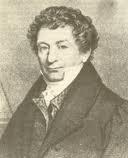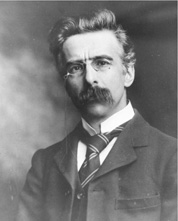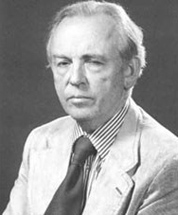Three Irish Scientists You Should Know
In honor of St. Patrick’s Day, we profile three Irish scientists who made medical history:
 Francis Rynd, who worked with Dublin’s poorest patients at Meath Hospital in the 1800’s, invented the hypodermic syringe and first used it to inject a painkiller in 1844. The syringe was a gravity-driven, two-piece device made of a cannula to carry the drugs and a trocar to pierce the skin. Florence Nightingale sure admired it: “Nothing did me any good, but a curious little new-fangled operation of putting opium under the skin, which relieved [the pain] for 24 hours,” she said.
Francis Rynd, who worked with Dublin’s poorest patients at Meath Hospital in the 1800’s, invented the hypodermic syringe and first used it to inject a painkiller in 1844. The syringe was a gravity-driven, two-piece device made of a cannula to carry the drugs and a trocar to pierce the skin. Florence Nightingale sure admired it: “Nothing did me any good, but a curious little new-fangled operation of putting opium under the skin, which relieved [the pain] for 24 hours,” she said.
 John Joly was a polymath engineer who had his fingers in several scientific pies: he devised the first widely applicable method of using radiation for cancer treatment in 1914 and an accurate way to estimate the age of geological features based on radioactive elements in minerals in 1899. He also came up with one of the first color photography processes in 1894. His insight into radiation therapy was to skip using the standard, but very expensive, elemental radium itself, but instead to use the radioactive radon gas it gives off. This could be collected and injected into the core of a tumor, where it would then percolate through and give the best chance of killing the cancer cells.
John Joly was a polymath engineer who had his fingers in several scientific pies: he devised the first widely applicable method of using radiation for cancer treatment in 1914 and an accurate way to estimate the age of geological features based on radioactive elements in minerals in 1899. He also came up with one of the first color photography processes in 1894. His insight into radiation therapy was to skip using the standard, but very expensive, elemental radium itself, but instead to use the radioactive radon gas it gives off. This could be collected and injected into the core of a tumor, where it would then percolate through and give the best chance of killing the cancer cells.
 Frank Pantridge, the “father of emergency medicine,” was a cardiologist who invented the portable defibrillator in 1965. The first device ran on car batteries and weighed over 150 pounds, but compared to the devices in hospitals at the time, this was a vast improvement in portability, and it’s saved millions of lives in the last fifty years.
Frank Pantridge, the “father of emergency medicine,” was a cardiologist who invented the portable defibrillator in 1965. The first device ran on car batteries and weighed over 150 pounds, but compared to the devices in hospitals at the time, this was a vast improvement in portability, and it’s saved millions of lives in the last fifty years.






0 Comments